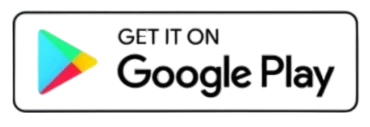How Augmented Reality Retail Shopping Is Changing Fashion?
The Future of AI in e-Commerce: Predictions You Will Witness Soon


TL;DR
AI isn’t just shaping eCommerce—it’s rewriting it. From hyper-personalized shopping to emotion-aware chatbots and zero-click checkouts, the next retail era blends automation, empathy, and innovation for a smarter, more human online experience.
In 2020, AI was a promising tool. In 2025, it has evolved into a silent co-pilot—curating products, guiding decisions, and even detecting human emotions. This isn’t a future trend; it’s the present reality, rapidly reshaping every corner of eCommerce.
According to a 2025 SellersCommerce report, the global AI-enabled e-commerce market is valued at US $8.65 billion in 2025 and projected to reach US $22.6 billion by 2032, growing at a 14.6 % CAGR.
Artificial Intelligence is no longer an optional enhancement for retailers. It has become the bedrock upon which successful, scalable, and emotionally intelligent commerce is built. Brands that still view AI as a feature are already falling behind especially when the future of AI in e-commerce is brighter than ever. The next era belongs to businesses that build their entire value chain—from search to checkout—around AI.
Why AI Isn’t Just a Feature—It’s the Foundation

A McKinsey & Company study says that effective personalization—one of the biggest applications of AI in online retail—can lift revenues by 5–15 % and improve marketing-spend efficiency by 10–30 %.
From Static Stores to Smart Journeys
Old-school online stores were cold and cluttered. Now, AI makes them personal. Every click reshapes your next recommendation—style, price, color, even your recent scrolls on social media.
From Product Push to Predictive Pull
Forget endless product hunts. AI predicts what you’ll want—before you do.
Example: Researching Bali vacations? Expect curated luggage and sunscreen offers right away.
According to the 2025 Quid Trend Report, AI-powered product recommendation systems already account for 15 % of innovation discussions in retail, with 10 % focused on inventory-management AI and 9.5 % on immersive tools like virtual try-ons.
Tech + Emotion = Trust
DHL’s 2025 E-Commerce Trends Report found that 70 % of global shoppers now expect retailers to offer AI-powered shopping experiences, including virtual try-ons, voice shopping, and AI-driven recommendations.
Modern AI interprets tone, mood, and even frustration. If your feedback sounds upset, the chatbot softens its tone or escalates to a human—building trust through empathy.
7 Bold Predictions for the Future of AI in eCommerce

In a 2025 Gorgias study, over 77 % of e-commerce professionals reported using AI and automation tools—up from 69 % in 2024—marking a steep acceleration in adoption.
Hyper-Personalization Becomes the Default
One thing you must experience with the future of AI in e-Commerce is Personalization. In upcoming days, it will no longer be limited to first-name usage in emails or location-based ads. It will operate at a 1:1 level, with every element of the user journey customized—from homepage banners to checkout flows.
AI will account for variables such as preferred color palettes, price sensitivities, fit preferences, ethical considerations (e.g., vegan leather), and even cultural context.
According to McKinsey, personalization at scale can lift revenues by 5 to 15 percent and increase marketing-spend efficiency by 10 to 30 percent.
Zero-Click Shopping Will Rise
With historical data, calendar integration, and behavioral cues, AI will proactively assemble shopping carts. Especially for replenishment items—detergents, groceries, grooming essentials—zero-click checkout will become mainstream.
Example: A smart home assistant that auto-reorders pantry items or a style assistant that assembles weekly wardrobe capsules for professionals.
Visual Search Will Outperform Text-Based Queries
Consumers are increasingly using images rather than keywords to shop. AI-driven visual search engines will evolve to understand style, texture, silhouette, and context.
Example: A user uploads a celebrity's outfit, and the engine matches each component—shirt, trousers, accessories—with shoppable alternatives.
Emotional AI Will Define Experience Differentiation
Emotional context will influence everything from site layout to chatbot tone. A frustrated user may be shown a calming interface or given one-click access to human support.
Example: Beauty retailers using facial expression analysis to recommend skincare for tired or stressed skin.
Dynamic, Personalized Pricing Will Become Commonplace
AI engines will price products dynamically, factoring in loyalty status, urgency, seasonality, purchase history, and even competitor activity. These systems ensure both competitiveness and profitability.
Example: A loyal customer sees a lower price for a premium product, while a new visitor sees a limited-time introductory discount.
Generative AI Will Automate Design and Marketing
Product ideation to go-live will be compressed from weeks to hours. GenAI will create product renderings, lifestyle imagery, ad copy, and even AR try-ons in real time.
Example: A small business owner using Shopify Magic to auto-generate visuals and descriptions for 100 new SKUs.
Human-AI Collaboration Will Shape Brand Identity
AI won’t replace human creativity; it will refine and scale it. Brands that harness both will stand out. For example, A curated fashion service where AI generates the base look and human stylists add seasonal touches, cultural nuance, or storytelling flair.
Benefits of AI in eCommerce: What It Solves and Scales
Now, when we know the future of AI in e-Commerce, let’s explore its benefits.
Personalization That Drives Conversion
Amazon reports that 35% of its sales stem from AI-powered recommendations. The math is simple: relevance equals revenue.
Discovery Without Overload
Contextual discovery—whether through visual search, voice input, or behavioral filters—cuts noise, shortens time-to-cart, and improves satisfaction.
Customer Support That’s Consistently Available
AI chatbots and voice assistants offer 24/7 support, can speak multiple languages, and learn from past tickets to provide increasingly accurate answers.
Smarter Inventory and Logistics
AI forecasts seasonal demand, identifies regional buying trends, and aligns supply chains accordingly. This reduces overstocking, improves cash flow, and minimizes last-mile inefficiencies. As IBM notes that AI in logistics can reduce supply chain forecasting errors by up to 50%.
Lower Return Rates
AI helps customers find the right fit, shade, or size the first time through virtual try-ons, fit prediction models, and real-time feedback loops. According to McKinsey, such predictive systems can reduce global e-commerce waste by over $200 billion annually, making e-commerce not only smarter but also more sustainable.
For Example: A shopper uploads a photo and receives suggestions on styles that flatter their body type, drastically lowering return risk.
Challenges Still Holding Back AI in eCommerce
For small businesses, building AI capability involves subscription costs, data hygiene requirements, training overhead, and integration hurdles.
- Data Bias: Over-personalization risks excluding niche users.
- Over-Automation: Too much AI can feel cold and robotic.
- Privacy Fatigue: Users want transparency and consent simplicity.
- Integration Cost: SMEs still find full-scale AI tools expensive.
Real-World Use Cases of AI in E-Commerce and Brand Innovations
| Brand | AI Application | Impact |
| Amazon (Rufus) | Conversational AI search | Personalized, intuitive queries |
| Glance | Visual commerce | Style-based discovery |
| Zara | Demand forecasting | Reduced overproduction |
| Sephora | Skin-tone matching | Inclusive beauty recommendations |
Future of AI in E-Commerce: Human + AI Synergy
Emotional Intelligence Still Requires Human Insight
AI can simulate empathy, but true emotional resonance comes from human intuition. Brands must ensure human oversight in brand voice, ethical decisions, and cultural sensitivity.
AI as an Assistant, Not a Dictator
Businesses must design systems where AI enhances, not overrides, human creativity. The best solutions use AI to do the heavy lifting—data processing, trend spotting—leaving storytelling and ethical judgment to people.
Wrap Up
The essence of shopping will always be human. But how we navigate it, what we expect from it, and how brands deliver on those expectations are being irrevocably shaped by AI.
The future of eCommerce isn't just smarter. It's more intuitive, emotionally resonant, and deeply collaborative. Brands that recognize this shift—and act on it—will lead the next digital renaissance.
FAQs
What are the benefits of AI in eCommerce?
AI brings a measurable, performance driven advantage to eCommerce. It analyses customer behaviour, predicts buying intent, and delivers precise product recommendations that directly improve conversions. It automates service workflows through intelligent chat systems, supports faster decision making with real time data insights, and strengthens inventory planning by forecasting demand more accurately. It also helps control losses through advanced fraud detection and reduces return rates by improving size and product matching. All these capabilities create a smoother shopping journey and support consistent revenue growth across markets.
How does AI help with online shopping?
AI helps with online shopping by making the experience faster, easier, and more personalized. It analyzes customer preferences, past purchases, and browsing behavior to suggest products that match individual needs. AI also supports instant queries, streamlines checkout, tracks orders, and provides tailored deals, making online shopping more efficient and relevant.
How has AI changed eCommerce?
AI has changed eCommerce by making shopping more personalized and efficient. It analyzes customer behavior to recommend products you’re likely to buy, predicts trends to keep inventories optimized, and automates support through chatbots for faster responses. AI also helps businesses streamline logistics and content creation, ensuring a smoother shopping experience.
What is the scope of AI in eCommerce?
AI has a wide scope in e-commerce, transforming both customer experience and business operations. It powers personalized recommendations, intelligent search, and chatbots to make shopping smoother. It also helps businesses manage inventory, forecast demand, optimize supply chains, and automate pricing. Small retailers use AI to compete efficiently, while large enterprises leverage it for scale and insights. By using AI, e-commerce businesses can boost sales, improve customer satisfaction, and make smarter operational decisions.
What is the future of AI in eCommerce?
The future of AI in eCommerce lies in hyper-personalization and smarter automation. AI will analyze your shopping behavior to suggest products, tailor marketing messages, and provide virtual assistants for instant help. It will also optimize supply chains, detect fraud, and improve search accuracy. For shoppers, this means a faster, smoother, and more relevant experience, while businesses can cut costs and stay competitive both locally and globally.







